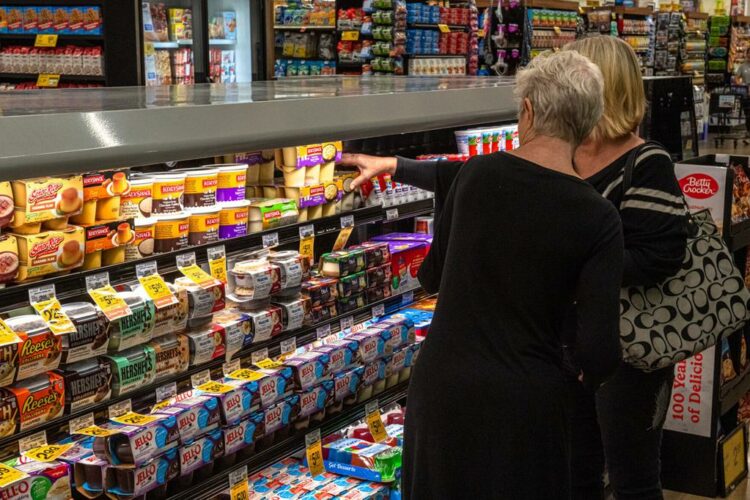Costs for U.S. consumers bounced 6.8% in November contrasted and a year sooner as flooding costs for food, energy, lodging and different things left Americans bearing their most noteworthy yearly expansion rate beginning around 1982.
Powering the expansion has been a blend of elements coming about because of the quick bounce back from the pandemic downturn: A surge of government improvement, super low rates designed by the Fed and supply deficiencies at production lines in the U.S and abroad. Producers have been eased back by heavier-than-anticipated client interest, COVID-related closures and overpowered ports and cargo yards.
The Labor Department likewise revealed Friday that from October to November, costs bounced 0.8%.
Expansion has been increasing tension on shoppers, particularly lower-pay families and especially for regular necessities. It has additionally invalidated the higher wages numerous specialists have gotten, muddled the Federal Reserve’s arrangements to lessen its guide for the economy and concurred with hailing public help for President Joe Biden.
Bosses, battling with laborer deficiencies, have additionally been raising compensation, and a large number of them have supported costs to balance their higher work costs, in this manner adding to expansion.
The steadiness of high expansion has amazed the Fed, whose seat, Jerome Powell, had for quite a long time portrayed expansion as it were “momentary,” a transient result of bottlenecked supply chains. Fourteen days prior, however, Powell flagged a shift, certainly recognizing that high expansion has persevered through longer than he anticipated. He recommended that the Fed will probably act all the more rapidly to progressively transition away from its super low-rate strategies than it had recently arranged.
The outcome has been value spikes for products going from food and pre-owned cars to hardware, family goods and rental vehicles. The speed increase of costs, which started after the pandemic hit as Americans stuck at homes overwhelmed plants with orders for merchandise, has spread to administrations, from condo rents and eatery dinners to clinical benefits and amusement.
Significantly more drastically, flammable gas costs have plunged almost 40% from a seven-year high came to in October. The outcome is that while normal home warming costs will well surpass last year’s levels, they won’t ascend as much as had been dreaded.
A few financial specialists are holding out trust that expansion will top before long and afterward bit by bit ease and give some help to purchasers. They note that supply deficiencies in certain ventures have started to step by step ease. And keeping in mind that higher energy costs will keep on troubling customers before long, Americans will probably be saved from before figures that energy costs would arrive at record highs over the colder time of year.
Various variables have been consolidating to ease energy costs as of late. Unexpectedly warm climate has assisted drive with bringing down petroleum gas prospects. Furthermore, the United States and a few other major other significant countries have consented to let oil out of their essential stores. Furthermore the OPEC+ oil cartel arrived at an understanding to deliver more oil in January.
Oil costs have been declining unobtrusively and driving, thus, to marginally bring down gas costs. A gallon of gas is averaging $3.38, as per AAA, down from $3.42 every month prior.
The normal expense to warm a home this colder time of year will be an expected $972, said Mark Wolfe, leader head of the National Energy Assistance Directors Association. That is not exactly the $1,056 his gathering had projected in October, however still higher than the normal $888 customers paid to warm homes the year before.
Food costs, as well, might actually ease because of sharp decreases in corn and wheat costs from their highs prior in the year.
Significantly more drastically, petroleum gas costs have plunged almost 40% from a seven-year high came to in October. The outcome is that while normal home warming costs will well surpass last year’s levels, they won’t ascend as much as had been dreaded.
Additionally, the rise of the omicron variation of the Covid has restored the possibility of more dropped or delayed travel and less eatery dinners and shopping trips. All of that, assuming it occurred, would slow purchaser and business spending and possibly control expansion.
Disclaimer: The views, suggestions, and opinions expressed here are the sole responsibility of the experts. No Unique Analyst journalist was involved in the writing and production of this article.

